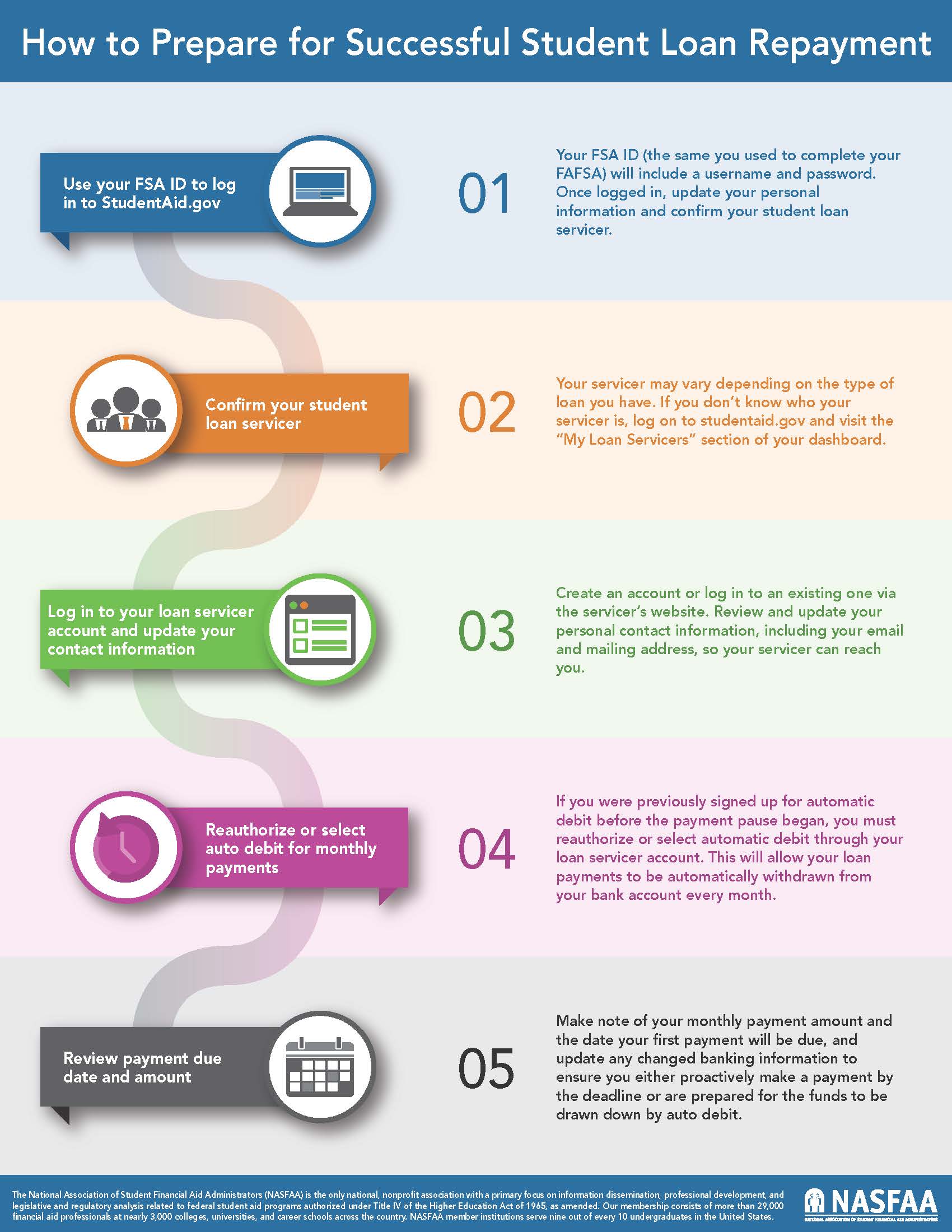IDR plans
As a result of the COVID payment pause, IDR plans have been automatically extended into 2024 and 2025. No borrower should be required to update their IDR plan until September 2024 at the earliest. This is true even if your income has changed or increased.
Many of you are wondering whether you need to update your income for your IDR plan. The short answer is no!
- If MOHELA is your servicer, log in and go to the Repayment Options → Income-Driven Plan Details page. View an example.
- Log into studentaid.gov. In the My Aid dashboard, click View Details. On your Loans page, click View Breakdown and then the View Loans down arrow for your DEPT OF ED loans. Click View Loan Details for any one of your loans. Scroll down to the Repayment Details box and look for an IDR ANNIVERSARY DATE. View an example.
- Contact your servicer if you can’t find these details, or wait until closer to the end of the payment pause.
The new IDR application allows the Department of Education to automatically pull from your tax return to make your annual income recertification easier. However, you may not want your IDR plan to be based on your tax return if you’d rather provide a pay stub to document your income. Follow these instructions to revoke data sharing permissions if you’re interested.
COVID payment pause
We hosted a Return to Repayment webinar on July 31. You can watch the recording or view the Google Slides to learn more about how to prepare for October.
Interest on federal student loans resumed accrual in September and payments are resuming in October.
To prepare for the resumption of payments, follow these steps:
- Log into studentaid.gov to check who your loan servicer is. While you’re there, update your contact information.
- Set up an online account with your loan servicer and enroll or reauthorize auto-debt. Update your contact information, make sure you’ve specified whether you want mailed or paperless communications, and enroll in auto-debt to receive an interest rate deduction and ensure you’re making on-time payments. Because most of us have switched loan servicers since payments were last due, your new servicer may not have your bank account information, so you’ll need to provide that info and enroll in auto-pay.
- Review your monthly payment and payment plan. What will you be paying, and when is your payment due? What repayment plan are you in, and is the plan still working for you? If you’re pursuing Public Service Loan Forgiveness(opens in a new tab), you’ll want to be in an Income-Driven Repayment plan(opens in a new tab). If you recently submitted an IDR application or switched loan servicers, that information may still be pending.
- Make sure you’re taking action early and not waiting until the last minute. You could miss a payment or end up in an unaffordable payment plan.
- Review your budget and prepare for an increase in expenses.
- Getting ahold of your loan servicer can be challenging right now. Be patient; you may need to call multiple times or use the live chat or email feature. If you need to get ahold of your servicer, set aside some time to account for long holds.
- Keep documentation of your payment plan, payments, PSLF and IDR applications, and correspondence with your servicer.
- Problems with your account? Contact your servicer and the regulators. Borrowers have been having trouble with their servicers, sometimes getting kicked out of their IDR plan, having their monthly payment miscalculated, or not receiving a billing statement. To find a resolution, you can file a complaint with the California Department of Financial Protection and Innovation and/or contact your loan servicer.
PSLF
MOHELA will credit time spent in the COVID payment pause toward PSLF so long as you were working full-time for a PSLF-qualifying employer.
Make sure to submit a new PSLF Form to certify your employment and payments annually and each time you leave a job. This will ensure you’ve gotten proper credit for all your payments or non-payments while the pause was in place.
On October 6, 2021, the Department of Education announced new improvements to the Public Service Loan Forgiveness program to restore the promise of PSLF. The temporary PSLF waiver was in place until October 31, 2022. The waiver allows borrowers to receive PSLF credit for all payments made while working full-time for a PSLF-qualifying employer, regardless of federal loan type or payment plan. This includes loan types and repayment plans that were previously not eligible for PSLF, and payments that were late or not made in the full amount due.
In October 2022, the Department of Education has issued new guidance for how it’ll handle PSLF between the waiver expiring (10/31/22) and new regulations going into effect (7/1/23). Borrowers will be able to receive credit for all past periods of repayment status, months prior to consolidation, months spent in deferment prior to 2013, and 12+ months of consecutive forbearance and/or 36+ months of cumulative forbearance.
On November 1, 2022, the Department of Education announced new regulations governing the Direct Loan program and PSLF that will go into effect on July 1, 2023. Review our News & Updates page for more information.
Miscellaneous updates
Your loans may have changed servicers during the payment pause. FedLoan Servicing, Granite State Management & Resources, and Navient all stopped servicing federal loans in 2022. If your loans were managed by one of these servicers, you are likely with a new servicer now. You can check your loan servicer on studentaid.gov.
There has been in increase in student loan scams since the COVID-19 and student loan relief announcements. Be aware of scammers and know that the federal government will never call to ask for a fee to suspend your loan payments. Report any scams to the FTC or the California Department of Financial Protection and Innovation.
last updated March 1, 2024

